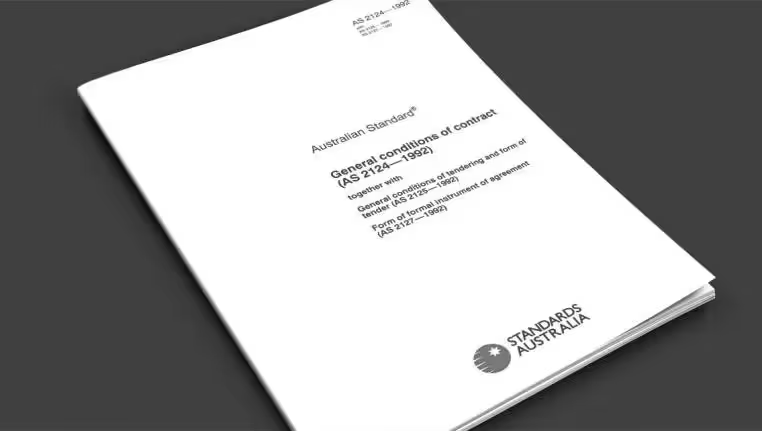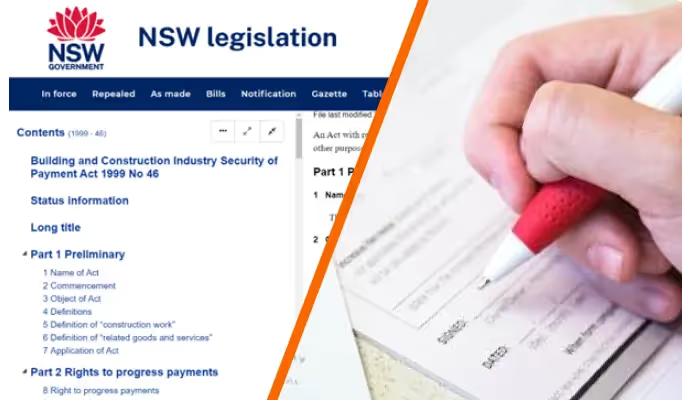Navigating the complexities of legislation around construction progress claims in Australia can be challenging. There are contract clauses to follow in contracts like AS2124 and AS4000. Plus, there is legal and regulatory compliance with the Security of Payment Act. This blog will focus on progress claims and use the Security of Payment Act in New South Wales (NSW).
Whether you're a client side project manager, contractor, or anyone performing construction contract administration, it is essential to know how to submit a progress claim under the Security of Payment Act. Let's unravel the complexities of this crucial process in your capital projects.
What is a Progress Claim?
A progress claim is a formal request for payment of contract works under a building contract and can be made under the Security of Payment Act. It usually takes the form of a letter issued by contractors, consultants, or any party engaged in contract work where a progress claim clause exists.
Check out our blog 'Exploring Standard Forms of Construction Contracts in Australia' to understand more about contracts in Australia.

Understanding the Security of Payment Act
Specifically in NSW, the Building and Construction Industry Security of Payment Act 1999 (NSW) ensures timely payments of progress claims within the construction industry. It's a critical legal framework to follow when submitting a progress claim.
Check out our blog on What is the Security of Payment Act and How It Affects Construction Contracts.
Guide for Submitting a Progress Claim
When considering these steps, it's important to read and understand your contracts, like AS2124 and AS4000, and the legislation. Each contract and application of the Act can be different, but here are the broad steps as they would apply to the head contractor.
Step 1: Assessing Eligibility
As a head contractor, you can make progress claims for construction contract works, supplied materials, or services under your contract (e.g. AS4000, AS2124, Defence Head Contract (HC-1)). Construction work and services can be claimed, even if the contract is not written, excluding progress payments or requiring a single payment when the work is completed.

Step 2: Timing of the Claim
Identify your contract's reference dates for submitting claims. Contracts might specify when payment claims can be made. If no dates are stated, it is the last day of the month according to NSW Fair Trading.
Step 3: Preparing the Progress Claim
To make a progress claim, you must draft a written progress claim specifying the amount due and provide a detailed description of the work or services. Be sure to attach documentation such as project reports, completion certificates, and other relevant contract documents.
.avif)
Optional Recommended Step: Make a courtesy call
Tip: Best give your principal, client, or client side project manager a courtesy call before serving them with your claim at the next step. This will ensure they have visibility, allow you to discuss your proposed claim before submitting it and build trust.
Step 4: Serving the Progress Claim to your Client Side Project Manager
Serve the claim to the principal/client according to the contract terms or on/after the specified reference date. This will often be a client side project manager named in the contract.
Delivery can be via post, fax, in-person, or other agreed methods, but it is best to check the contract and make life easy for the client side project manager. After all, they are the ones who will issue you the payment schedule and ensure you get paid.

Step 5: Include a Supporting Statement
When a progress claim is served to a principal or client side project manager, it is a requirement to provide a supporting statement. The statement must declare all payments to subcontractors for the construction work.
Often, this is called a 'Subcontractors Declaration' or 'Subbie statement' for slang. Use the correct form depending on your contract type: standard or owner-occupier contracts.
Step 6: Accurate Record Keeping
Note the date when the principal or client side project manager receives the claim. Best to start a spreadsheet, and keep track of all your progress claims for a given contract in one spot!

Receiving and Responding to a Payment Schedule
Post submission, the respondent (usually the principal/client/Client Side Project Manager) should issue a payment schedule. If you made the courtesy call without surprises, it should match your progress claim.
The schedule will outline the Client Side Project Manager's proposed payment and details of any discrepancies with your progress claim.
From there, you can prepare your invoice to the scheduled amount and submit it (with the schedule, and your original claim) to the client side project manager/other recipient for arranging payment.
For Client Side Project Managers, check out our blog: How to respond to a Progress Claim under the Security of Payment Act
Conclusion
Making a progress claim under the Security of Payment Act is a structured process requiring attention to detail and compliance with the steps outlined in this blog. By being aware of these steps and undertaking a more detailed read of the resources we shared here, you can ensure a smoother, more efficient path to securing your payments.
Disclaimer: While Mastt is dedicated to offering valuable industry insights, it's important to note that we are not legal experts. Therefore, our content should not be interpreted as legal advice. We encourage readers to exercise discretion and seek personalized guidance from qualified legal professionals.






.avif)






.avif)


